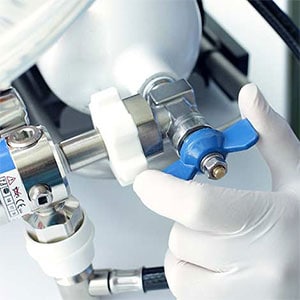Control Control in Compressed gas systems
In the world of aseptic pharmaceutical manufacturing, reliability and utility security is the most important. Utilities can be categorized into two main types: Process system And Process support system. While the process support system does not directly affect the quality of the product or patient safety, the process system is very important because they interact with important products or materials. One of the most vital process systems in this context is compressed gas.
The gas system is compressed in aseptic manufacturing, including air, nitrogen, carbon dioxide, and hydrogen gas, plays an important role in various stages of pharmaceutical processes. Therefore, understanding and managing risks associated with this system is very important to maintain product quality and ensure compliance with good manufacturing practices (GMP).
How the gas system works compressed
The compressed gas system operates using a compressor to reduce the volume of gas, which in turn increases the pressure. This process converts mechanical energy into pneumatic energy, makes it possible to release compressed power through piping and distribution filters.
Compressed air systems that are well designed usually include:
- Compressor: Core components that press the gas.
- Condensate separation system: Eliminate moisture from compressed air.
- Water separation system: Next ensure drought.
- Filter: Particle filter and merger that removes contaminants.
- Dryer: The refrigerator dryer helps manage moisture.
- Tanks and valves: For gas storage and flow control.
- Sampling points: Important for quality monitoring.
This system can be produced in place or supplied in a portable tank of the vendors that meet the requirements.
The importance of risk assessment
Conducting a compressed gas risk assessment is very important in the GMP environment. This allows producers to document the design and use of this system while determining their criticism. Here are the main reasons for prioritizing this assessment:
- Prevent contamination: Design, qualifications, and appropriate maintenance helps prevent contaminants from affecting product quality, stability, and efficacy.
- Ensure compliance: Mandate Regulatory Agency that all utility systems, including compressed gas, meet strict quality standards. Risk assessment helps in showing compliance.
- Increase process efficiency: Understanding potential risks associated with compressed gas use allows producers to optimize the process, increase overall efficiency.
Air compressed in the pharmaceutical process
Compressed air is usually used in various pharmaceutical applications, such as:
- Packaging and filling: Cleaning and release of moisture from the container.
- Pneumatic transportation: Help in the movement of materials during manufacturing.
- Direct Product Contact: Used in processes such as mixing, granulation, drying, pressure, coating, and packaging of tablets, capsules, ointments, creams, gels, and syrups.
Given the important role played by the air compressed in this process, maintaining cleanliness and integrity is very important.
Want to read more? Jump to other posts released in this series:
Compressed gas system: guidelines for control
or
Read the paper, compressed gas risk assessment: Significant steps in your CCS.
football News
News
Berita
News Flash
Blog
Technology
Sports
Sport
Football
Tips
Finance
Berita Terkini
Berita Terbaru
Berita Kekinian
News
Berita Terkini
Olahraga
Pasang Internet Myrepublic
Jasa Import China
Jasa Import Door to Door




